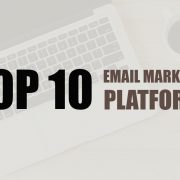Tips for Using AI Tools for Content Writing
As technology advances, it’s increasingly clear that artificial intelligence will continue playing a significant role in content creation. Many content creators already utilize AI to assist them in their tasks, including copywriting and brainstorming. Almost anything can be streamlined thanks to tools such as OpenAI’s ChatGPT.
AI writing tools (such as ChatGPT, Copy.AI, Jasper, Rytr, and Writesonic) have been released to great fanfare, with many lauding them as the future of copywriting. Thanks to machine learning, natural language processing (NLP), and language models, AI writing tools have grown exponentially into what we now see today.
But you can’t just trust an AI writer to do all your work for you. Even the best AI writing tools can’t effectively replace human writers — yet. AI text generators create short-form content fairly well but struggle more with long-form content. While they are great at paraphrasing or summarizing information in a user-friendly format, they tend to lack personality and tone of voice.
This doesn’t mean that you shouldn’t be using AI copywriting tools for content marketing – just that you need to use them the right way. Know which types of content an AI content writing tool can help you with, and when to leverage it for help when you are struggling. While using AI helps streamline the writing process, it doesn’t eliminate it.
Provide High-Quality Content Briefs
AI writing assistants depend on high-quality inputs to be successful. The most common shortcoming of AI writing tools is that their content is generic and lacks detail. While this cannot be completely remedied, your input can address this issue.
AI content generators are just like people; both need a high-quality content brief to create high-quality content. If you prompt an AI writing tool with “write a blog about content marketing,” what you get may or may not be usable.
Don’t be bland and general in your prompts; provide more detail and be descriptive. Inputting “Write a blog about how AI writing tools can be effectively used in content marketing strategy” gets you a much better result than that other, boring example. AI-powered tools are not mind readers; clearly state what you want from them.
Different Tools Excel at Different Content
A good prompt for one AI writing tool may not be a good prompt for another. Different writing tools operate via different databases, meaning they have varying functionality when using the same prompts.
Tailor your prompts to the tool that you’re using. Some tools may need more detail about certain aspects of the content brief than others while others may struggle with certain formats. Experiment with different writing tools to determine which one(s) works best for the style of content.
Be Prepared to Edit
While AI writers produce good content, expect a lot of editing. AI typically provides quality short-form content, such as Facebook ad copy, product descriptions, and social media posts, but may struggle with long-form content like SEO blogs, website copy, or landing pages.
AI can help streamline your copywriting workflow but can’t replicate certain qualities that human writers have. Even if you use high-quality prompts, you can still run into issues with AI-generated content, especially when using a free AI tool such as GPT-3 (the free version of ChatGPT). AI can make mistakes, just like a person can.
Whether the mistakes/issues are minor, such as repetitiveness or lacking personality, or larger issues like plagiarism or lacking readability, take the time to review and improve AI written copy.
Always be ready to fact-check an AI writing software’s work and do some rewrites. While some content writing tools, such as Frase, can include brand voice to a certain extent, this is not always the case with AI tools. You may have some hiccups along the way, so it is always best to carefully read and reread AI-generated content and look for ways to improve. A good rule of thumb is that any copy AI creates should end up being around 50% AI and 50% human by the final draft.
How to Use AI for Brainstorming
Instead of only using AI to write content, try using it to brainstorm new content. AI can speed up the research process greatly. For AI tools to work well as an ideas generator, provide good research prompts.
If you simply prompt the tool with “provide research about [insert topic],” you’ll receive a jumbled mess of information, which probably doesn’t help your writer’s block. Instead, ask AI tools to provide you with a list of content ideas regarding a certain topic or generate a list of titles for blog ideas.
It may not provide the perfect content idea, but it can help get those creative juices flowing so you can come up with an idea for your original content. This is just one example of how AI tools have many more use cases for content creation than many realize.
If you are particularly stumped, you can even ask AI to generate an outline for a blog idea, giving you a template to write from. Even if the outline doesn’t live up to your standards, it is a good starting point that you can alter to shape the content how you want it.
Don’t Forget About SEO
Lastly, AI writing software is excellent for search engine optimization (SEO) — if you prompt it well, that is. Content marketing copy that’s optimized can boost your business, and using AI content writing tools can help you reach your SEO goal.
Do thorough keyword research so you can provide the artificial intelligence with what it needs to write (good) SEO-optimized content. Provide it with an outline and important keywords to get the best results. As always, check through AI-generated content and make sure everything is as SEO-friendly (and human-reader-friendly) as you intended.
Use AI Tools for Content Writing With Care
AI writing tools are just like anything else: good in moderation. We’re not quite ready to exclusively use artificial intelligence for content creation (thankfully for me), so we need to use it carefully.
When you use AI tools for content writing needs, do the research, have a plagiarism checker at the ready, and prepare to edit. Whether you have a free plan or splurged on a paid plan, remember that copywriting is a human art. Regardless of technical ability and pricing, AI cannot replace a human writer.











